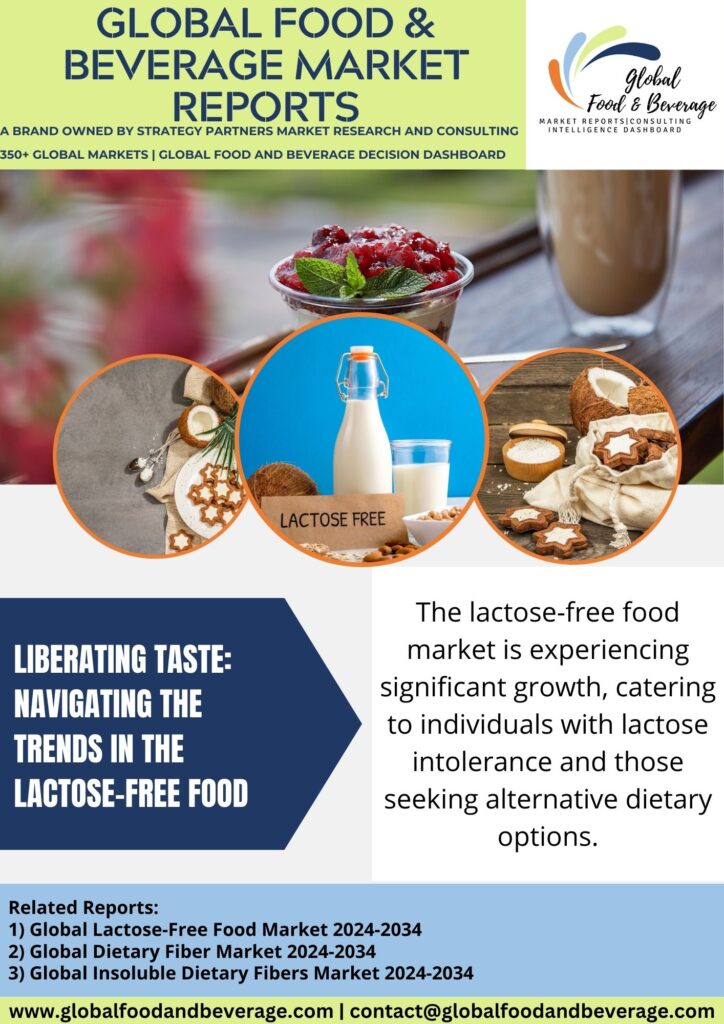
Lactose-free food has become a dietary necessity and a welcome solution for individuals with lactose intolerance, a common condition where the body lacks the enzyme lactase needed to digest lactose, the sugar found in milk and dairy products. Lactose intolerance can lead to symptoms such as bloating, gas, and stomach cramps after consuming lactose-containing foods. In response to the growing awareness of this condition, the food industry has embraced the development of a wide array of lactose-free products to accommodate individuals seeking relief from digestive discomfort.
The primary focus of lactose-free food is to provide alternatives that mimic the taste and texture of traditional dairy products without the unwanted side effects. Lactose-free milk, for instance, undergoes a process where the lactase enzyme is added to break down lactose into simpler sugars before consumption. This ensures that individuals with lactose intolerance can enjoy the nutritional benefits of milk without the digestive challenges.
Beyond lactose-free food milk, the market now boasts an extensive range of lactose-free alternatives, including cheese, yogurt, ice cream, and even non-dairy versions of popular desserts. These products often use plant-based alternatives like almond milk, soy milk, or coconut milk as a base, catering to those with lactose intolerance as well as individuals adopting dairy-free or vegan lifestyles.
The availability of lactose-free options extends beyond traditional dairy substitutes to include processed foods where lactose may be an unexpected ingredient. Lactose-free versions of popular snacks and baked goods ensure that those with lactose intolerance can enjoy a varied and inclusive diet without compromising taste or nutrition.
The rise of lactose-free foods reflects a broader trend in the food industry towards inclusivity and catering to diverse dietary needs. It not only addresses the practical concerns of individuals with lactose intolerance but also aligns with the growing demand for alternatives that accommodate various dietary preferences, whether driven by health concerns, ethical choices, or cultural considerations.
ADVANCEMENTS
Lactose-free food products have brought about innovations to cater to individuals with lactose intolerance, providing them with a broader range of options that are both delicious and nutritionally balanced. One significant breakthrough is the development of lactose-free dairy alternatives. These products, made from plant-based sources such as soy, almond, coconut, or oats, offer a dairy-like experience without the presence of lactose. Advances in processing techniques have improved the taste, texture, and nutritional profile of these alternatives, making them more appealing to consumers seeking lactose-free options.
The expansion of lactose-free product categories is noteworthy. Manufacturers are now offering a diverse array of lactose-free versions of traditionally dairy-based foods, including ice cream, yogurt, cheese, and even desserts. This expansion reflects a commitment to meeting the dietary needs of individuals with lactose intolerance while providing a variety of choices to suit different taste preferences.
Advancements in enzyme technology play a crucial role in the production of lactose-free products. The use of lactase enzymes to break down lactose in dairy products has become more sophisticated, enabling the creation of lactose-free options that closely mimic the taste and texture of their traditional counterparts. This enhances the overall sensory experience for consumers, addressing concerns about sacrificing taste when opting for lactose-free alternatives.
Innovations in packaging contribute to the convenience and accessibility of lactose-free products. Single-serve portions, resealable packaging, and extended shelf-life technologies enhance the practicality of these products for consumers with lactose intolerance, accommodating busy lifestyles.
CHALLENGES
The production and consumption of lactose-free foods face challenges related to formulation, market dynamics, regulatory compliance, consumer preferences, and nutritional considerations. One significant challenge is formulating lactose-free products that replicate the taste and texture of their traditional counterparts. Achieving the desired sensory attributes without compromising on flavor or texture demands continuous innovation in formulations and processing techniques.
Market competition is intense, with various lactose-free products available globally. Successfully differentiating products, addressing diverse flavor preferences, and staying competitive require continuous research and development, as well as strategic marketing strategies.
Regulatory compliance poses challenges in the lactose-free food industry, especially concerning labeling requirements and health claims. Adhering to diverse regulations across regions or countries demands continuous diligence to ensure transparency and compliance with evolving standards.
Consumer perception and education are vital challenges. While lactose-free products are designed for individuals with lactose intolerance, effectively communicating the benefits, safety, and uses of these products is crucial for building consumer awareness and trust. There may be misconceptions or lack of awareness about the nutritional aspects of lactose-free alternatives.
Nutritional considerations, such as ensuring adequate calcium intake in lactose-free diets, pose ongoing challenges. Formulating products that not only lack lactose but also provide essential nutrients, including calcium and vitamin D, requires careful attention to nutritional balance.
CONCLUSION
Lactose-free food epitomizes a compassionate response to dietary sensitivities, providing a flavorful and inclusive culinary landscape. Beyond accommodating lactose intolerance, it represents a cultural and gastronomic shift towards mindful consumption. The industry’s commitment to diverse alternatives, from plant-based to lactose-free dairy, mirrors a dynamic response to evolving dietary preferences. As health-conscious consumers seek delicious options without compromise, lactose-free offerings stand at the intersection of taste and well-being. The future holds promise for continual innovation, ensuring that lactose-free choices not only meet dietary needs but also contribute to a global culinary tapestry that celebrates diversity, health, and the joy of satisfying, lactose-free indulgences.
